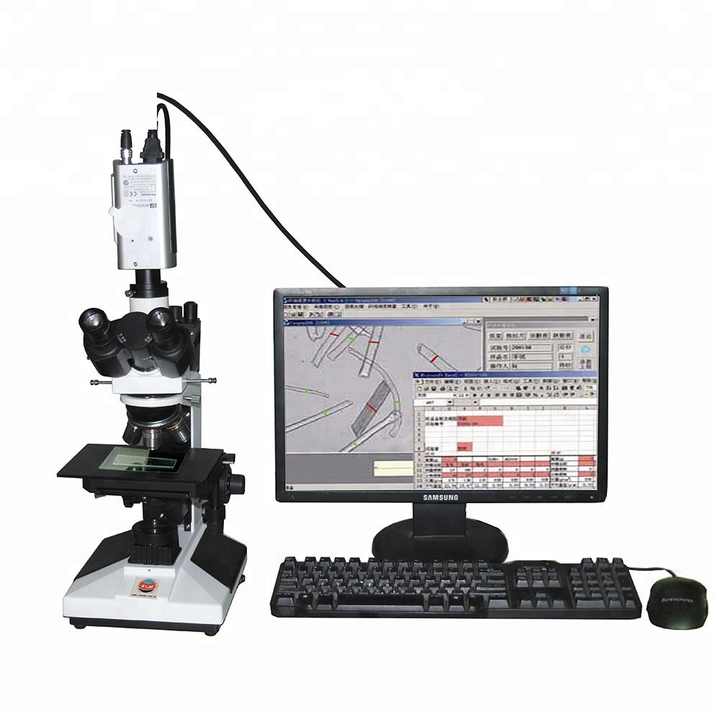Advanced Technology for Optical Fibre Diameter Analyser Precision
Advanced Technology for Optical Fibre Diameter Analyser Precision
Blog Article
Unlock Accuracy: The Ultimate Guide to Optical Fiber Size Analyser Devices
Accurate dimension of optical fiber size is crucial for boosting the efficiency and integrity of fiber optic systems. As we take a look at these devices, it ends up being evident that the future of optical fiber evaluation is advancing swiftly, elevating inquiries regarding how these advancements will influence the sector.
Significance of Optical Fiber Dimension
Precisely measuring optical fiber size is vital in making certain optimal efficiency and integrity in interaction systems. The size of optical fibers straight influences their light transmission abilities, influencing bandwidth, depletion, and total signal stability. A precise dimension is important to preserve the wanted specifications for numerous applications, consisting of telecommunications, data transmission, and noticing modern technologies.
Incorrect or irregular fibre diameters can cause enhanced losses and lowered effectiveness, eventually compromising the performance of the whole interaction network. Additionally, variations in size can cause difficulties in splicing and connecting fibres, causing higher functional expenses and prospective system failures. Consequently, implementing extensive measurement protocols is essential.

Types of Diameter Analyser Equipment
To accomplish reliable optical fiber dimensions, numerous size analyser devices are employed, each made to deal with particular dimension requirements and applications (optical fibre diameter analyser). These tools can be broadly categorized into three major types: manual, semi-automated, and totally automated analyzers
Manual diameter analyzers are typically utilized in smaller sized laboratories or operations where accuracy is needed but production quantity is reduced. They provide operators straight control over the dimension procedure, enabling careful adjustments and verifications.
Semi-automated size analyzers enhance effectiveness by combining manual input with automated features. These devices usually include straightforward interfaces that simplify the measurement procedure while still enabling for driver oversight.
Completely automated size analyzers represent the pinnacle of dimension technology. These advanced systems incorporate advanced sensing units and software program to give real-time measurements with minimal customer intervention. They are ideal for high-volume production atmospheres, ensuring consistent precision and fast information collection.
Each kind of diameter analyser serves distinctive operational demands, making it important for individuals to thoroughly assess their particular demands when picking the ideal device for optical fibre dimension.
Trick Attributes to Consider
When selecting an optical fiber size analyser, numerous crucial features call for mindful factor to consider to guarantee optimum efficiency and dependability. Dimension precision is paramount; look for tools that supply high-resolution readings, preferably in micrometers, to make certain precision in diameter analysis. In addition, the rate of measurement is vital, especially in manufacturing environments where performance is necessary.
An additional click here now vital feature is the calibration process, as a trustworthy analyser needs to provide simple calibration procedures to maintain measurement stability gradually. The variety of sizes the tool can gauge is also substantial; make certain that it accommodates the specific fibre types relevant to your applications.
Transportability could be a consideration, particularly for fieldwork; lightweight and portable designs boost use in different setups. Easy to use user interfaces and software program compatibility can facilitate smoother operation and data analysis.
Lastly, take into consideration the assistance and guarantee provided by the maker; trusted customer service and thorough service warranty options can protect your investment see and make certain lasting satisfaction. By concentrating on these functions, you can select an optical fiber diameter analyser that meets your certain requirements and boosts your operational capabilities.
Ideal Practices for Use
Effective use of optical fiber size analysers pivots on a complete understanding of ideal techniques that enhance measurement reliability and accuracy. Make sure that the analyser is adjusted properly before each usage. Calibration versus known standards minimizes potential mistakes and develops a baseline for subsequent dimensions.
Second, maintain a clean environment. Dirt, moisture, or impurities on the analyser or the fiber's lenses can skew results. Regularly inspect and clean both the fiber and the tools to preserve optimum efficiency.

In addition, carry out dimensions at constant temperatures and humidity levels, as environmental aspects can influence results. Paper each measurement thoroughly, noting problems and any anomalies come across throughout the procedure.
Future Trends in Optical Fiber Analysis
As the demand for high-performance optical fibers proceeds to climb, advancements in analysis methods are established to change the sector (optical fibre diameter analyser). Future trends in optical fibre evaluation will likely be driven by boosted automation and the assimilation of expert system (AI) and equipment discovering (ML) technologies. These innovations assure to boost data accuracy, lower analysis time, and make it possible for real-time tracking of fibre top quality
Furthermore, the growth of mobile and user-friendly evaluation tools will certainly facilitate on-site evaluations, permitting better adaptability and performance in manufacturing atmospheres. Enhanced imaging modern technologies, such as high-resolution imaging and spooky evaluation, are expected to provide much deeper insights right into fiber attributes, making it possible for manufacturers to maximize their processes additionally.
In addition, as sectors significantly welcome sustainability, there will be a push for green products and approaches in optical fibre manufacturing. This shift will necessitate brand-new analytical strategies to assess the performance and longevity of these products under differing problems.
Verdict
Exact measurement of optical fibre diameter is crucial for enhancing efficiency and guaranteeing integrity in communication systems. here are the findings Proceeded technology will even more boost the accuracy and effectiveness of optical fiber evaluation.
Accurate measurement of optical fibre diameter is vital for improving the performance and integrity of fibre optic systems. In a significantly linked globe, where high-speed information transmission is vital, the function of precise optical fibre diameter dimension can not be overstated, as it offers as the foundation for durable communication framework.When selecting an optical fiber size analyser, several crucial features require mindful consideration to make sure ideal performance and integrity.Reliable usage of optical fiber diameter analysers hinges on a comprehensive understanding of finest methods that enhance measurement integrity and precision.Precise measurement of optical fibre size is vital for optimizing efficiency and ensuring dependability in communication systems.
Report this page